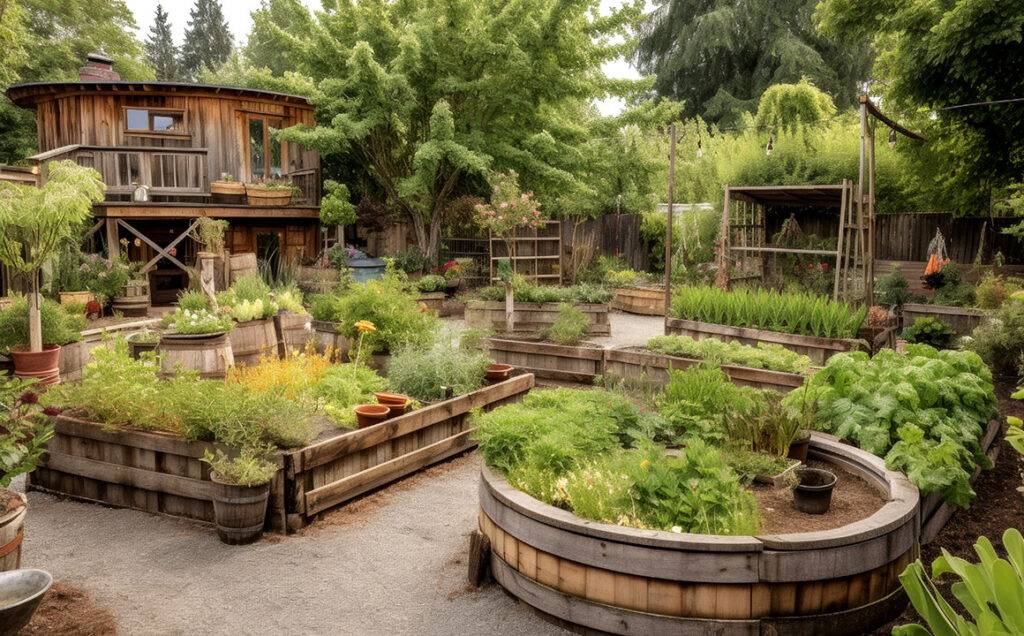Are you tired of constantly perfecting your garden? Let’s face it, it can take up so much of our energy. However, did you know that there is another, somewhat unconventional approach known as “Chaos Gardening?” While traditional gardening methods emphasize neat rows, careful spacing, and precise care routines, Chaos Gardening takes a different route. It embraces natural chaos and the unpredictability of Mother Nature. If this is something that sounds appealing to you, stay tuned to learn a bit more about this unique gardening practice.
Understanding Chaos Gardening
At its core, Chaos Gardening is a philosophy that celebrates the beauty of nature’s randomness. Instead of creating rigid structures and strict rules for your garden, Chaos Gardening encourages you to work with the natural flow of your outdoor space. This approach acknowledges that gardens are not static entities but dynamic ecosystems influenced by various factors like weather, soil conditions, and the presence of wildlife.
Key Principles of Chaos Gardening
Chaos Gardening is just what it sounds like. However, that doesn’t mean that there aren’t certain principles that you should follow. Here are a few simple guidelines that can help you on your Chaos Gardening journey:
Embrace Diversity
In Chaos Gardening, diversity is not just encouraged; it’s celebrated. Plant a wide variety of species, including native plants, flowers, herbs, and even some wildflowers. This diversity not only enhances the visual appeal of your garden but also attracts a broader range of beneficial insects and pollinators.
Forget About Perfection
Say goodbye to the idea of a meticulously manicured garden. Chaos Gardening accepts that some level of disorder is not only natural but also beneficial. Let plants grow in clusters, allow for some self-seeding, and let nature take its course. This approach can create a more relaxed and inviting garden space.
Observe and Adapt
Rather than imposing strict schedules and routines, Chaos Gardeners become keen observers of their garden’s dynamics. Pay attention to which plants thrive in certain areas, how wildlife interacts with your garden, and how the seasons affect growth patterns. This observational approach allows you to make informed adjustments as needed.
Minimal Intervention
Chaos Gardening favors minimal intervention. While you should still provide essential care like watering and occasional weeding, the emphasis is on letting plants adapt and evolve on their terms. This approach often leads to hardier, more resilient plants that can thrive with less human interference.
Benefits of Chaos Gardening
Now that you understand the core principles of Chaos Gardening, let’s explore the benefits it offers. Of course, it’s not only the fact that it’s a lot easier to maintain. There are also other aspects that you could benefit from.
Biodiversity Boost
By embracing a wide array of plant species, Chaos Gardening promotes biodiversity. A diverse garden attracts a variety of insects, birds, and pollinators, creating a balanced and thriving ecosystem. This can help reduce the need for pesticides and create a more resilient garden.
Natural Aesthetics
Chaos Gardens possess a unique charm. They have a wild and natural beauty that can be more visually appealing to some than meticulously manicured lawns. The ever-changing landscape can be a source of inspiration and delight.
Environmental Benefits
Chaos Gardening aligns with environmentally conscious practices. By nurturing native and wildlife-friendly plants, you contribute to the preservation of local ecosystems and help combat habitat loss.
Getting Started with Chaos Gardening
Now, let’s get to the point and learn how you can actually get started on your chaos gardening journey. Don’t worry, it’s not anything overly complicated. Here’s everything you have to take into consideration:
Select a Diverse Plant Palette
Choose a wide range of plants, including native species and those that support local wildlife. Mix flowers, shrubs, and even some non-invasive groundcovers to create layers of vegetation.
Planting and Placement
Plant your chosen species in a way that allows for some natural mingling and clustering. Don’t worry about strict spacing or regimented rows; let plants find their own space.
Observe and Adapt
Throughout the gardening season, observe how your plants interact with each other and their environment. Adjust your care routines based on your observations, but resist the urge to over-manage.

